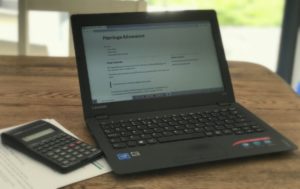How Does the Marriage Allowance Work?
The Marriage Allowance was brought in in 2015/16 and was designed to enable couples to transfer a small part of their personal allowance to their partner if they were not using it.
The premise is that one partner earns less than the personal allowance (they could actually earn nothing) and the other partner only pays basic rate tax (i.e. doesn’t earn enough to pay higher rate tax).
Partner in this sense means either you are married or in a civil partnership.
The partner who earns less (let’s call them Person 1) can transfer 10% of their personal allowance to the partner who earns more (let’s call them Person 2) for each tax year.
So for example, in 2020/21 the personal allowance is £12,500. So Person 1 can transfer 10% of that i.e. £1,250 to Person 2. Person 2 would then have a personal allowance of £13,750 instead of £12,500.
This increased allowance for Person 2 means that they would pay £250 less tax in the tax year for 2020/21, equating to more than £20 a month in their pocket.

You can also backdate your claim for a number of tax years if you were in the same position and have not claimed it. This could give you a nice lump sum for minimum work.
You can apply for the marriage allowance online and will need some information to confirm your identity including both National Insurance numbers. Check out how it works here.
You can also apply through your self-assessment or by writing to HMRC.
Be aware that there are a few websites advertising to sort it out for you. These will likely charge you money that you do not need to pay – so just go to the government website to claim.
